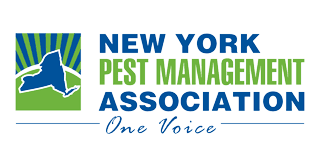The western conifer seed bug (Leptoglossus occidentalis) was first described on the West Coast. The bug has spread east and is currently in most northern states, including New York, and is now in Albany. When they fly, these bugs create a loud buzzing noise and can climb up on a house’s walls in large quantities in the late summer and early fall. Although they are viewed as a nuisance bug, they can be a real problem when they congregate on your wall and get in your house.
Description Of Western Conifer Seed Bugs
Western conifer seed bugs are a type of leaf-footed bug. They have flattened places on their back legs. These bugs are brownish, and the top of their abdomen is yellow or orange with five transverse black patches. This color pattern is shown when the bugs fly. These bugs are about ¾ inch long. When disturbed, the bug emits a bad smell.
Lifecycle Of The Western Conifer Seed Bug
Western conifer seed bugs emerge from their overwintering places in the late spring. They eat first-year cones and the places flowers are forming on a variety of conifers. The females lay eggs in a chain along the needles of the tree - the eggs hatch in about 10 days. The first instar feeds on needles and tender cone scales.
As it molts, the nymphs' mouthpieces get larger, and they will pierce growing seeds and suck out the pulp. The nymphs go through five instars. They continue feeding on the seeds of the conifers until it starts to get cold. They then find a safe place to spend the winter, such as under bark and in bird and rodent nests. This is typically when the western conifer seed bugs enter buildings, including homes, in large numbers. These bugs only have one generation a year.
Problems Caused By Western Conifer Seed Bugs
These bugs do not sting or bite. However, they can be alarming when large numbers enter homes, offices, and other buildings looking for places to spend the winter. They can also do much damage to Douglas firs and pine trees by destroying the seeds. Seed producers can suffer significant economic losses because of these bugs.
Preventing Problems With Western Conifer Seed Bugs
The best way to prevent the western conifer seed bug from causing problems is to exclude it from your house. Here are some tips on keeping the bug from entering your home:
- Make sure window and door screens are tightly fitting and do not have any holes in them.
- Make sure door sweeps do not have any holes in them.
- Caulk openings in the foundation and outside walls.
- Caulk around pipes, electrical wires, and cables where they enter the house.
- Caulk gaps around window frames, soffits, and doors.
- Caulk cracks behind chimneys.
- Caulk cracks underneath the wood fascia.
- Put screened chimney caps on the chimney.
- Put screens over attic and wall vents.
Getting Rid Of Western Conifer Seed Bugs
In the late summer and early fall, thousands of these bugs can mass on your walls while they try to get into your house. Here at Absolute Pest Control, we have the knowledge and experience for treating the outside of your home for western conifer seed bugs.
We also will treat the inside of your home to eliminate any bugs that have snuck inside. After the bugs are gone, we will maintain quarterly visits to ensure that no new pests of any kind will enter your home. Contact Absolute Pest Control today to schedule treatment and get rid of the western conifer seed bugs! We offer both residential pest control as well as commercial pest management services.








